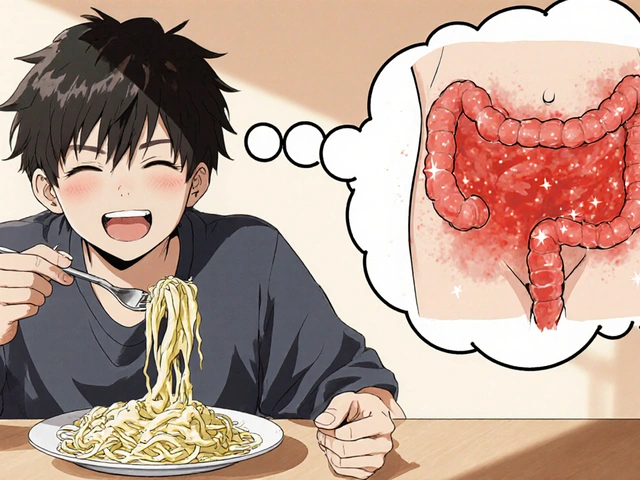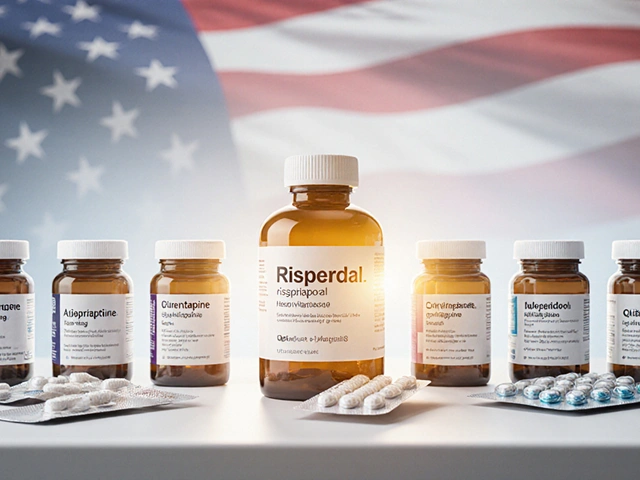Proctitis and Food Allergies: How Diet Triggers Affect Rectal Inflammation
October 18 2025Hypertension: What It Is and How You Can Keep It Under Control
If your doctor ever mentioned “high blood pressure,” they were talking about hypertension. It’s a condition where the force of blood against artery walls stays higher than normal for a long time. Most people don’t feel any pain, but the extra strain can damage the heart, kidneys and eyes over years.
Understanding Hypertension
The numbers you see on a cuff tell the story. A reading below 120/80 mmHg is considered normal. Once it climbs above 130 systolic (the top number) or 80 diastolic (the bottom), doctors label it hypertension. Risk factors are easy to spot: age, family history, being overweight, too much salty food, lack of exercise and smoking.
Symptoms aren’t reliable. Some folks feel headaches, dizzy spells or a pounding heart, but many walk around with no clue anything’s wrong. That’s why regular checks matter – a quick wrist test can catch trouble early.
Managing High Blood Pressure
The good news is you have real tools to lower those numbers. First up, lifestyle tweaks:
- Eat smarter: Fill half your plate with veggies, choose whole grains and cut back on processed snacks that hide salt.
- Move more: Even a 30‑minute walk most days drops systolic pressure by a few points.
- Watch the weight: Losing just five pounds can make a noticeable difference.
- Limit alcohol and quit smoking: Both raise blood pressure and strain the heart.
If diet and exercise aren’t enough, doctors often prescribe medicines. Common classes include ACE inhibitors (like lisinopril), ARBs, beta‑blockers, calcium channel blockers and diuretics. Each works a bit differently – some relax blood vessels, others help the kidneys get rid of extra fluid.
When you start a pill, keep an eye on side effects. A dry cough might mean an ACE inhibitor isn’t right for you; a slow heartbeat could point to a beta‑blocker issue. Talk to your pharmacist or doctor about any weird feeling – they can adjust the dose or switch drugs.
Monitoring at home helps too. A digital cuff costs under $50 and stores readings, so you can spot trends. Aim for two measurements each morning, before coffee, and average them. If numbers stay high, call your provider; if they’re moving down, you’re on the right track.
Stress isn’t just a feeling; it spikes pressure too. Simple breathing tricks – inhale for four seconds, hold for four, exhale for six – can calm the nervous system in minutes. Pair that with hobbies you enjoy and you’ll lower stress hormones that push blood pressure up.
Our tag page collects articles that dig deeper into specific drugs and health tips related to hypertension. You’ll find guides on buying medications safely online, alternatives to common blood‑pressure pills, and real‑world advice from patients who’ve managed the condition successfully.
Bottom line: hypertension is silent but manageable. Check your numbers regularly, eat clean, stay active, and follow your doctor’s medication plan. Small daily actions add up to a healthier heart and fewer complications down the road.
 28 Aug
28 Aug
Early Detection of Pheochromocytoma: Symptoms, Screening, Diagnosis, Treatment
Spot pheochromocytoma early to prevent dangerous crises. Learn symptoms, who to screen, best tests, and what to do after a positive result.
Read More...




